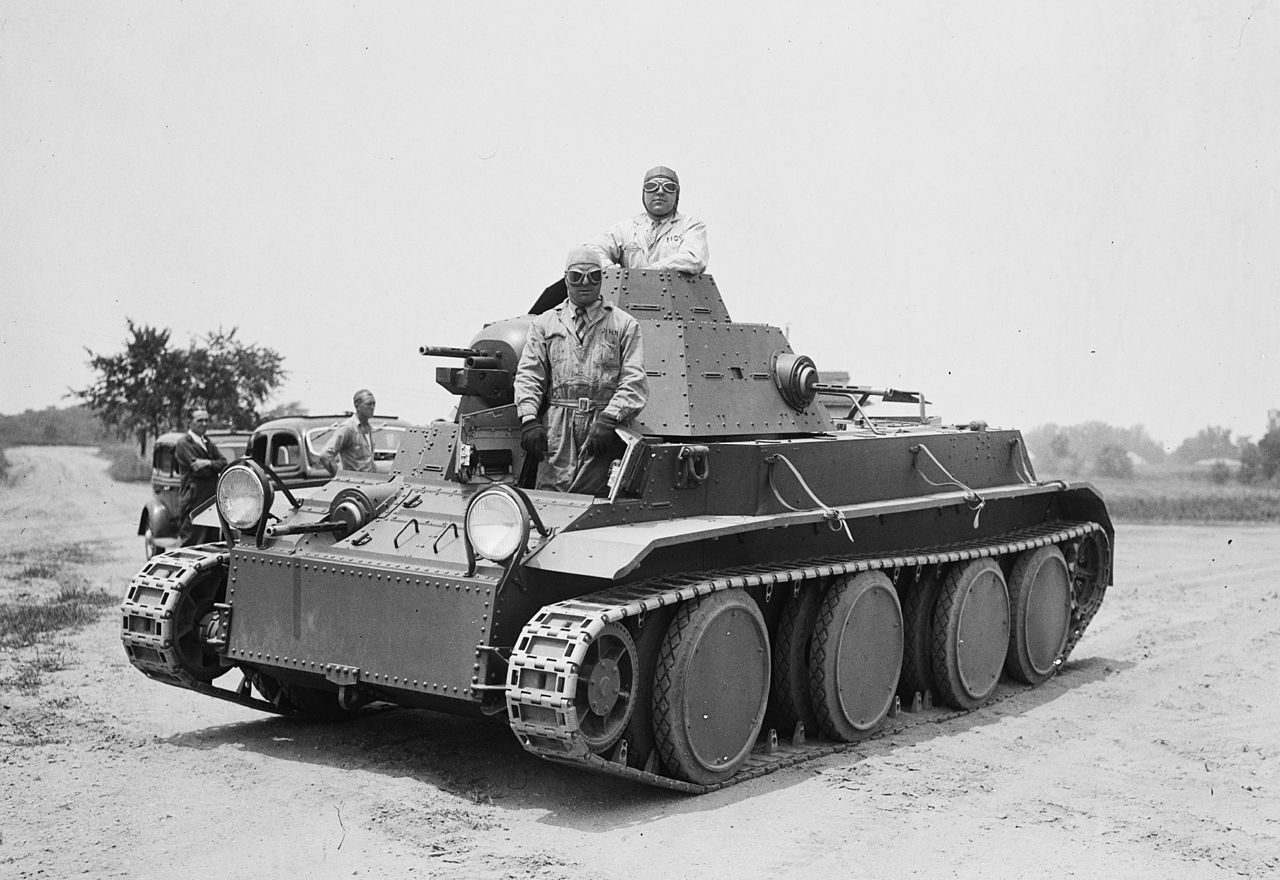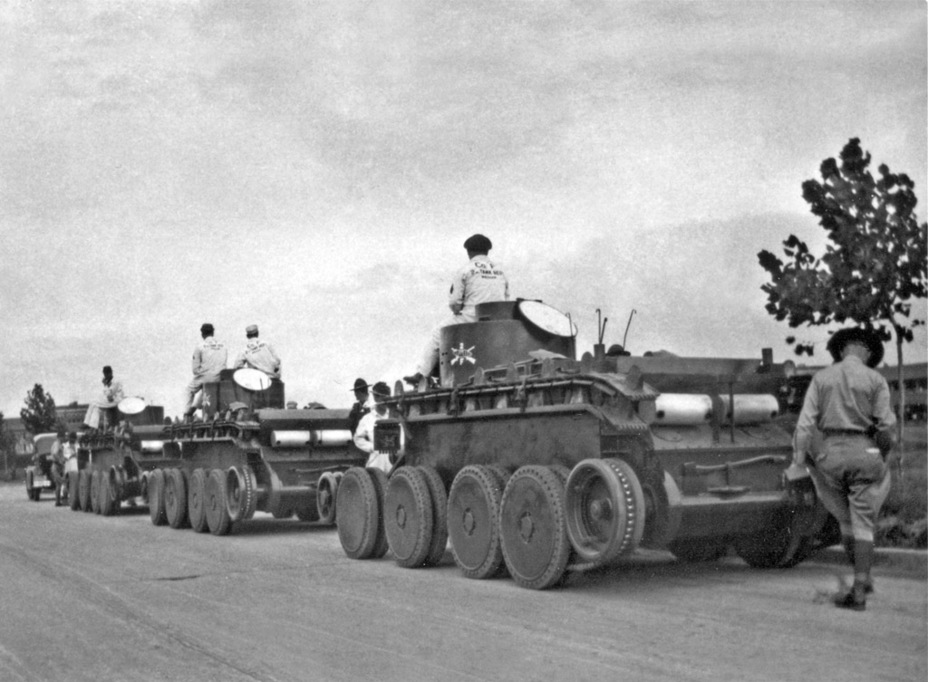That piece of junk was powered by a Continental R-670, the same engine you find in the PT-17 Stearman biplane trainer aircraft that was the first trainer aircraft many USAAC pilots are going to see. Engine bottleneck. So guess what? Not only is this slower than a Stuart cross country, paper thin armored clunker, with the handle me gently or my transmission will quit on you; a mere way-stop to the Stuart, but it is a lot less reliable than this... piece of junk.
And there are only about 300 of them, the M-2 A4s.
That thing's (^^^ Ha-Go) shortcoming was paper thin armor (1.5 cm frontal plate, about the actual same plate as a British cruiser tank A9 of 1941 of the same period) and a lack of a radio. But its transmission, diesel engine and gun were absolutely 100% reliable. It could shoot holes in the M2 (^^^) and more importantly, it weighed only half as much, so it could be easily shipped. It was one of the many reasons the British in Malaya were routed. (Any tank supported infantry is 2x as lethal as none tank supported infantry,)
I think that the US Army Automotive Command should have pulled their collective hat-racks out of their biological waste treatment plant orifices and tried for this:
Hi, I'm what beat the Japanese at Khalkin Gul.
Which this was a hop skip and jump toward...(see below the ancestor of the BTs)
That is American (^^^) BTW and the only thing wrong with it, is what sits on top of it. (Not just the turret, but some of the braindead evaluators.).
The Stuart was indeed a considerable improvement over it, and equally almost a full magnitude over the Rock Island M2 which started life as a Vickers 6 tonner riopoff. Better engines and armor package in the Stuart. The gun (3.7cm) was still pathetic. A British 2 pdr or a French 4.7cm would have made the Stuart more lethal. (Prefer the French gun. It comes with HE and canister for anti-infantry work.)
Of course going straight for an M-7 instead of farting with the Stuart would have meant North Africa in 1941 would have been "interesting" in a negative Axis outcome kind of way.
Hi, there! I'm an evolved Stuart. I'm not as tall as a Sherman, I weigh less than a Sherman, have better protection than any British cruiser, with the same cross country performance and a better gun! My problem? I'm 3 years too late in 1943! So why build me? (Correct decision BTW. With the war in full swing, the resource diversion was not justifiable. McP.)
BTW as modern scholarship has shown, a "Honey" to a British tanker means something that is a bit "sticky" and messy, so one cannot conflate Americanisms with what the British actually meant by "Honey".
Don't know where that wrong idea came from, maybe R. P. Hunnicutt?





